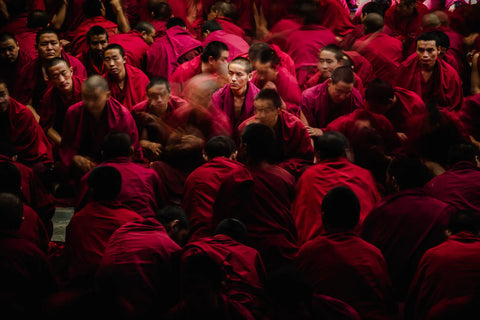Tibet, renowned for its profound Buddhist traditions and spiritual culture, harbors a contentious period in its history known as the "Bloody Anti-Buddhist Persecution." Unfolding in the 17th century under the leadership of Tibetan King Lobsang Choekyi Gyaltsen, this episode marked a severe blow to the local Buddhist community.

Motivated by the perceived threat posed by the religious authority of Buddhist monks to his political rule, King Lobsang Choekyi Gyaltsen initiated a ruthless campaign. The consequences were devastating – numerous Buddhist temples were destroyed, and monks were either expelled or subjected to violence. This period of anti-Buddhist fervor left an indelible scar on Tibet's rich cultural and religious heritage.
The accounts of this historical episode, however, are shrouded in controversy. Historical records are often influenced by political and religious factors, leading to varying perspectives on the authenticity and specific details of the events. Some scholars argue that this period has been exaggerated or distorted to serve particular political agendas.

Despite the controversies, the majority of historians and researchers generally agree that there was indeed a degree of truth to the anti-Buddhist persecution in the 17th century. This period holds paramount significance in understanding Tibet's history and the evolution of its religious landscape. It also serves as a reminder to approach historical events with a nuanced understanding, as history is often layered and intricate.
Navigating the tumultuous waters of Tibet's past, the anti-Buddhist persecution stands as a pivotal chapter that demands careful consideration. It prompts us to adopt an objective stance in unraveling historical narratives, ensuring a more accurate understanding of Tibet's bygone era. As we explore this historical episode, we gain insights not only into Tibet's past but also cultivate a more enlightened perspective for the future, appreciating the complexities that shape a region's history.












